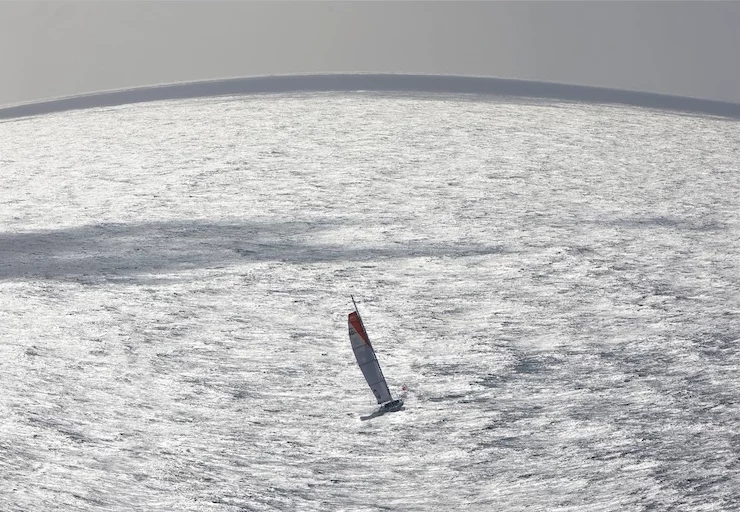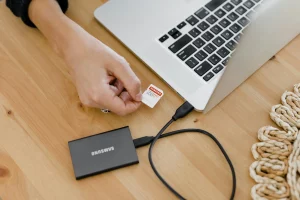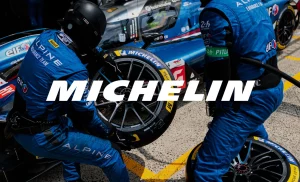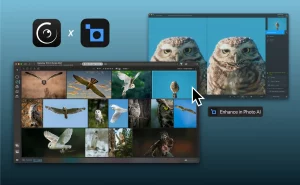Imagine yourself out at sea, amidst the chaos of the waves, trying to get the shot that will capture the energy of the moment. This is Gilles Martin-Raget’s daily routine, a photographer renowned for his breathtaking shots that capture the essence of the sea and nautical competitions. Gilles has created an inseparable link between the art of photography and the ferocity of boat racing. With a rich and varied career, he has immortalized key moments in prestigious competitions such as the America’s Cup. Today, he shares his experience, his passion for the sea and the secrets behind his photographs, which almost seem to defy the elements.
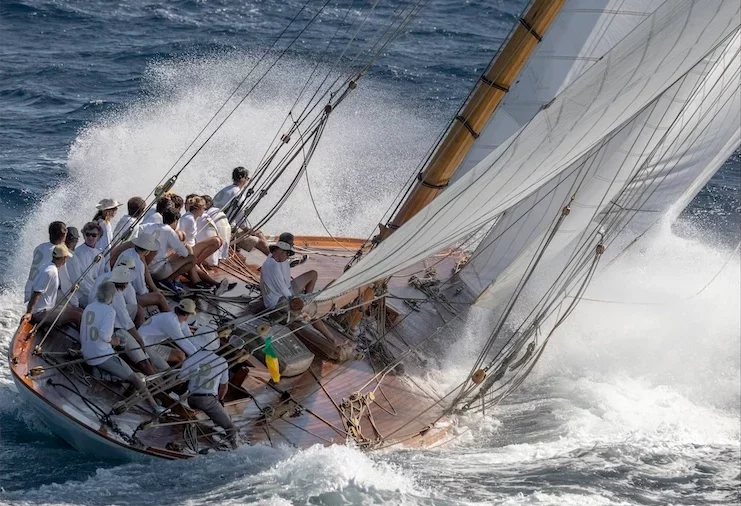
You specialize in marine photography, in races like the America's Cup. Which did you discover first, photography or sailing?
My passion for photography started in my teenage years, like many others. My first subjects were my friends. I lived in Arles and it was the beginning of the Rencontres d’Arles: one falls more easily into photography… My beginnings took place in my bathroom, where I developed my black and white photos.
I have always been interested in journalism, especially because of characters like Tintin the reporter. I started sailing late, at only 19 years old, and I immediately brought my camera along. At university, I started competing and working for Voiles et Voiliers magazine, thanks to reports on yachting events.
I had the chance to follow the America’s Cup in 1983. This was the edition where the Australians won for the first time, while for 150 years, the race had been won by the Americans. A historic event that I had the chance to capture while I was just starting out. I managed to sell a photo for the cover of one of the largest American sailing magazines: 500 francs (after agency fees). I thought I could make a living from this profession and I threw myself into it.

The same year, you were part of the French team competing in the America's Cup 1983, and you were a photo reporter during the Australia II. How has your knowledge of sailing influenced the way you take your photos?
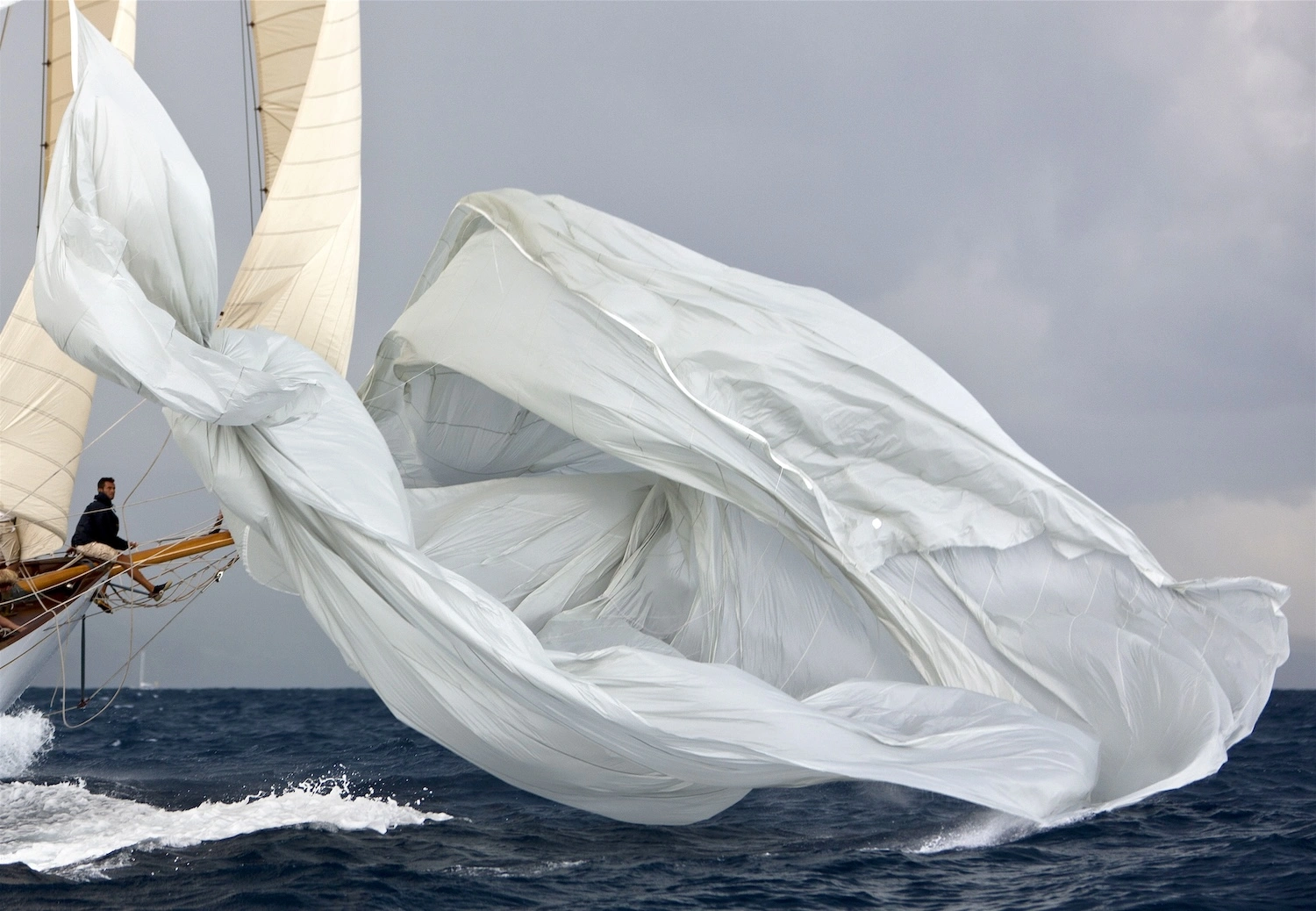
How do you achieve these highly worked compositions in the particular conditions of sailing and with such moving subjects?
We do not control what happens; our goal is to capture the emotion or a very technical moment. It is essential to know how to stand on a boat, to be comfortable even when the waves overwhelm it. Precautions must be taken as our equipment does not like sea spray. We use waterproof housings that we only take out at the last moment, or we hide them under loose clothing to protect them.
It’s a team effort. We work closely, whether with the helicopter pilot or the boat captain. It is necessary to understand what we can or cannot do during the race, especially avoiding placing ourselves in front of the leading boat or on the path of competitors. Cooperation is essential.
We do not always know the pilots, as they are recruited by the race organizers. However, it often happens that the helicopter pilots are the same from one race to another, which facilitates communication. Since the races take place over several months, we learn to better understand our needs. I show them how I work, whether with wide-angle lenses or telephoto lenses, so that they adapt and get closer or farther away as needed.
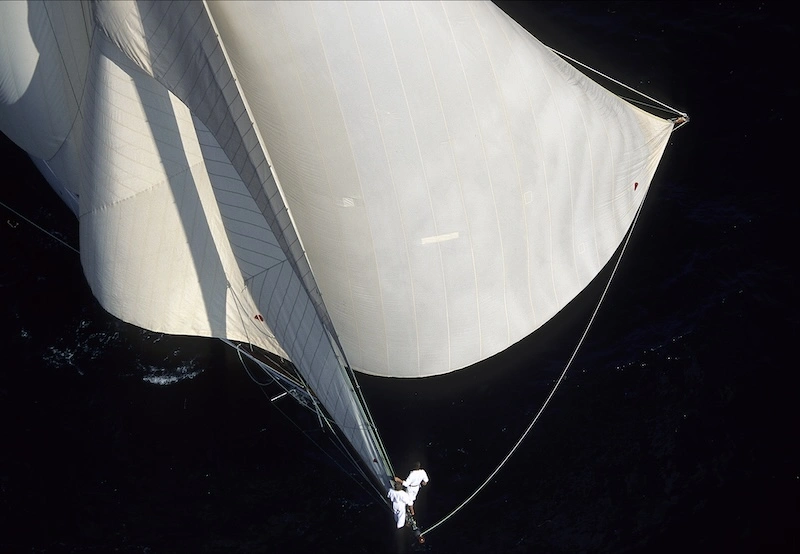
Do you have any special equipment or specific techniques for photographing in the marine environment?
I’ve worked with various cameras, from Nikon to Leica, and Canon. The advent of autofocus telephoto lenses revolutionized our profession by significantly simplifying focusing, especially on a boat where the use of a tripod is limited. Canon has always been a leader in sports photography, and we gradually gained access to high-quality telephoto lenses, which we haven’t departed from since.
The lenses have evolved from 300mm to 600mm, with multiplied or doubled zooms. This allows us to explore different perspectives and photograph crews up close, as the human aspect is crucial.
Our equipment is sensitive to rain, but it has improved over time, although I have a collection of bodies corroded by corrosion at home. In the past, we renewed our equipment every two years, but my last body dates from 2018.
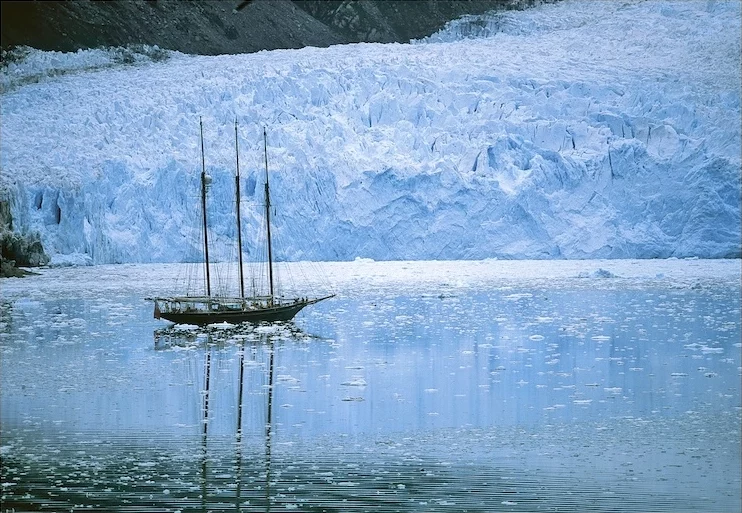
I started with film photography using Kodakchrome films. Then, slightly red-tinted Fuji Velvia films took over, perfect for sea photography. I used films until 2005, when I switched to digital photography, an economic revolution for professional sports photographers.
The advent of the Internet has transformed the distribution and marketing of our photos, reducing the number of independent photographers. Social networks have also changed the game: most photographers are not paid today. This taught me the humility to see that everyone could take pictures and pushed me to explore new skills, like video and drone, to stay competitive.
Today, the photographer’s role extends from development to video, including sharing, with tight deadlines to send our shots. We no longer have time to have a drink with the crews. It’s often up to us, the photographers, to close the press rooms.
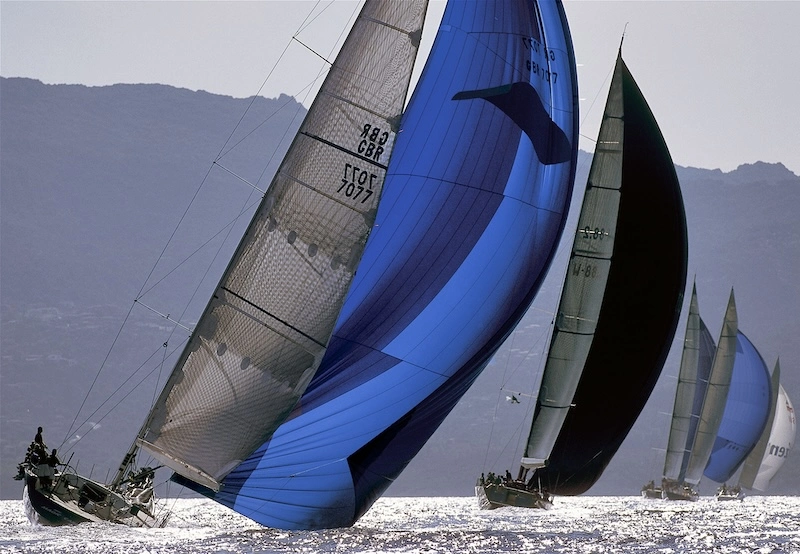
Has the arrival of drones shaken up your practice?
Currently, drones complement helicopters. But they must be launched and monitored from a boat, which can be complicated, and they require calm weather conditions, which is not always compatible with yachting where the wind can be strong. Nevertheless, they are easier to use and less expensive than helicopters, gaining popularity for environmental and practical reasons. In the future, drones could dominate sports photography.
The latest technological advances focus on stabilizers and video. New drones better meet photographers’ needs, offering more diverse captures than just wide-angle images.
Do you like Gille's interview?
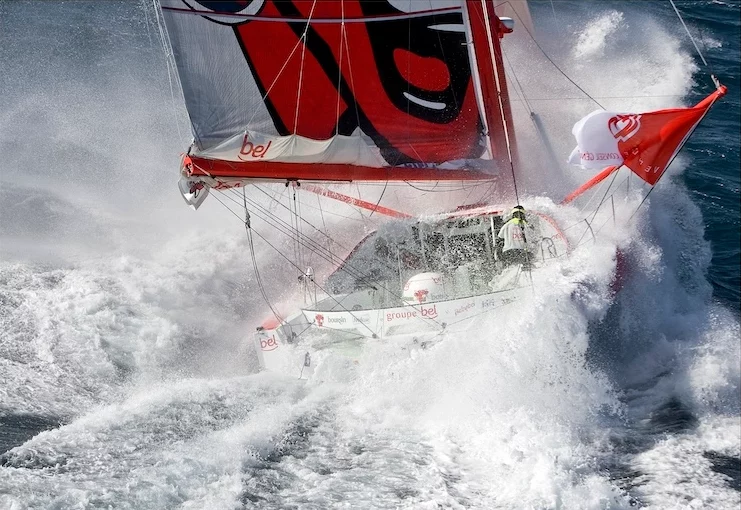
Could you describe your approach to post-processing and organizing your work as a photographer?
My post-processing process is quite minimalist. I work in RAW, then do a quick edit on a selection that I process in JPG, adding IPTC information. I mainly use automatic mode, which ensures optimal exposure.
Regarding sea photography, the horizon is always in sight. The first correction to make is to ensure that the horizon is straight, using the sea as a reference. Then, I might do some cropping or correct a burnt shadow, but that’s about it.
I then proceed to export in JPG using the maximum size. Then, I resize the images for Internet use. I spend my time resizing. This race for millions of pixels is unnecessary, as it often leads to having to reduce the images.
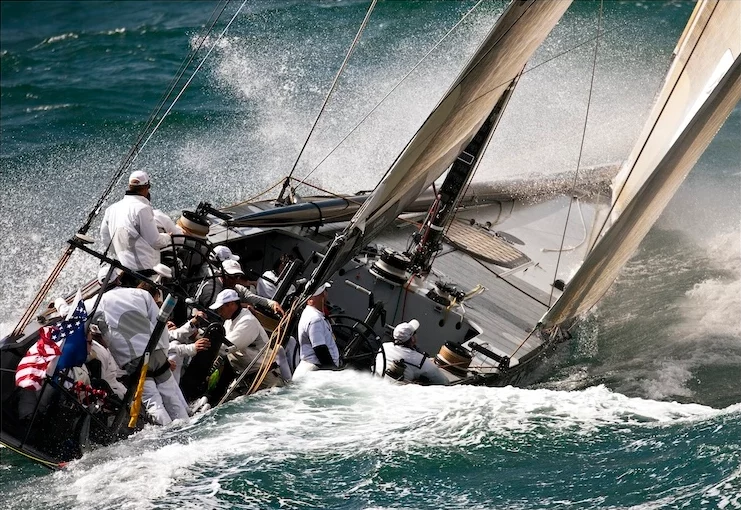
You often speak in the plural, do you have a team?
I had an assistant, initially not a photographer but an engineer by training, to whom I recommended familiarizing himself with digital photography if he wanted to become a photographer. He worked with me for 20 years. He has worked with the Americans. Given our similarity in work, we decided to specialize, and he turned to video.
We collaborate closely, sharing almost the same vision, and can use the same equipment, thanks to technological advances that allow filming with cameras. Video is now more accessible, with accessible editing software, which has allowed us to respond to our clients’ requests and diversify our activities.
In some cases, I use my beloved vintage Mamiya Tripod. During wintertime, I could use some lights for portraits, and a reflection screen.

You have made photojournalism your profession. What advice would you give to a young photographer starting out?
Invest in video, because I believe that still images will now come from videos. You can already create magazine covers or double pages from videos. The key is to master all these mediums. The use of a drone depends on your field of activity. In the city or outdoors, it can vary.
“Learn how to sell yourself and find clients”
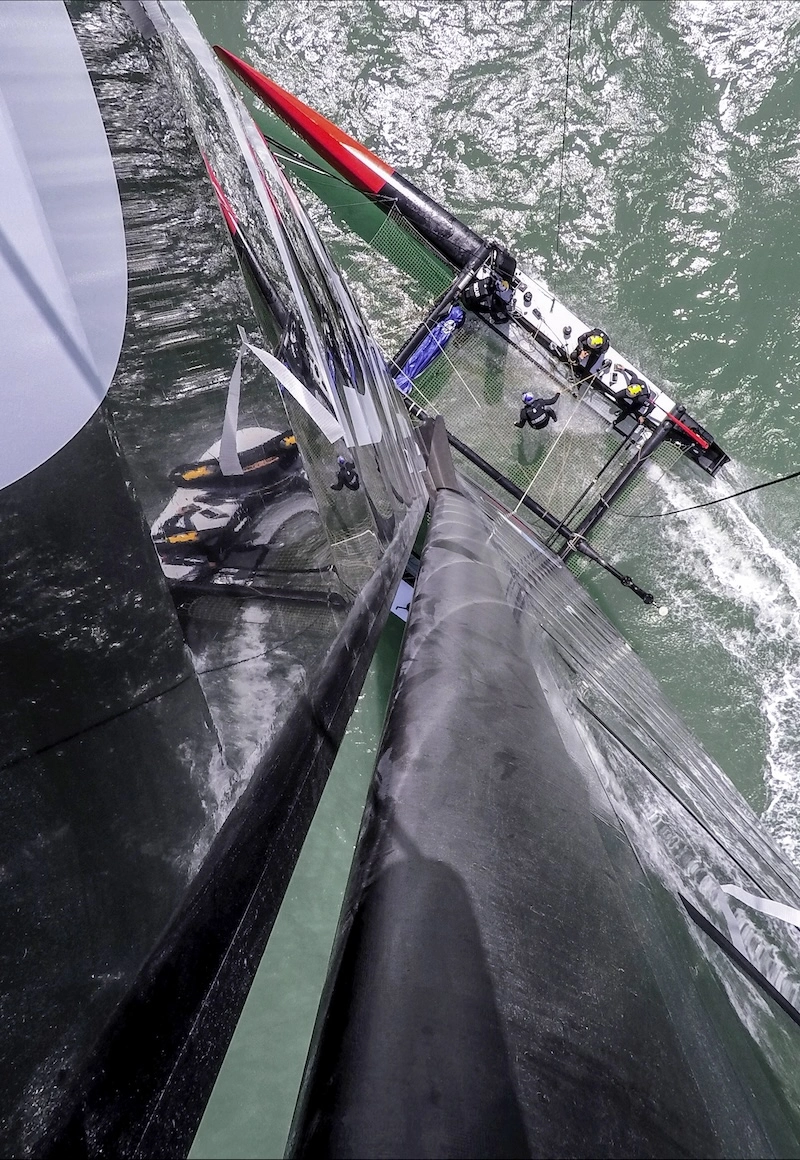
Does this interview inspire you?
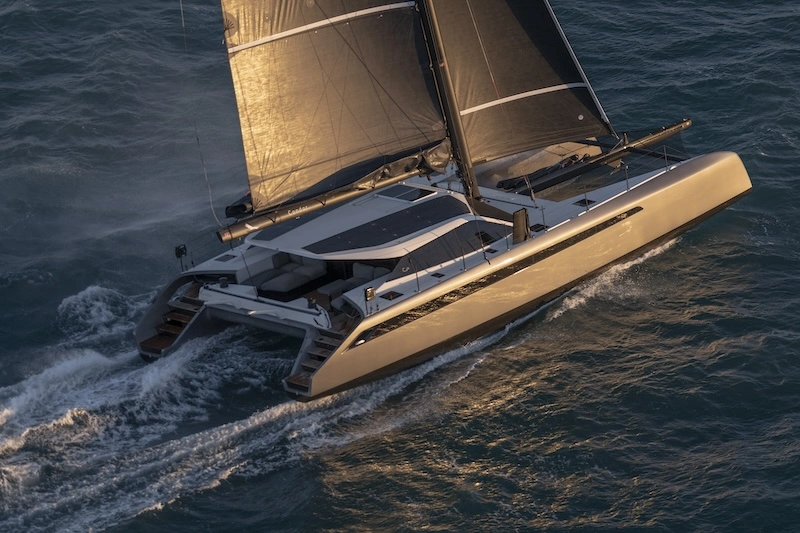
You work for boat builders like Outremer. How do you create a space for artistic freedom?
When shipyards launch a new model, they need photos for their communication. We have to do the shoot in 2 to 3 days. We receive a list of everything they need: the boat with all sails deployed, the crew comfortably installed, or the boat at the port in an idyllic setting. It involves managing a small team, but after that, it leaves me a lot of creative freedom.
The client sees the final result, but they don’t necessarily know how we got it. They don’t know what time the light will be best for shooting, nor when to call the helicopter. These photography conditions are exceptional, especially since we are in beautiful places. We create images that make people dream. In a way, we photograph our own cruise. The main constraints are related to time and weather, which we juggle all day.
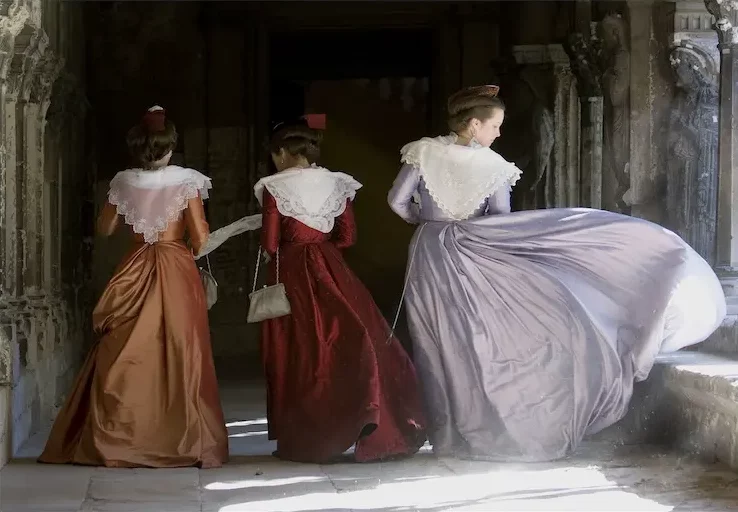
The obligation to deliver results can be stressful in advertising, but for me, commissioned photography is a symbol of success. Anyone can take photos, but when someone entrusts you with their budget, it’s a sign of trust. I admired Frédéric Alain, one of the first to work with telephoto lenses, who collaborated with the Beneteau shipyards, one of the largest in France and even in the world. This type of work was reserved for certain photographers in my eyes. So when the shipyard contacted me, I was extremely honored. Moreover, it’s the most lucrative work.
When a publisher trusts you to create a book, it’s also an important sign of trust. Creating something from nothing, with an author and a designer, is a very enjoyable part of our job. My best memory of a book is one of my first, Secret d’Arlésiennes, with Actes Sud and Michel Biehn. At a time when publishing was more flourishing, we made a book about the Arlésiennes. These family costumes, worn at festivals, were beautiful. I photographed the Arlésiennes with the same approach as for sports, using telephoto lenses and paying great attention to detail. It brought a new perspective to the genre. It was beautiful, and it’s my favorite book among the 35 I’ve had the chance to make.
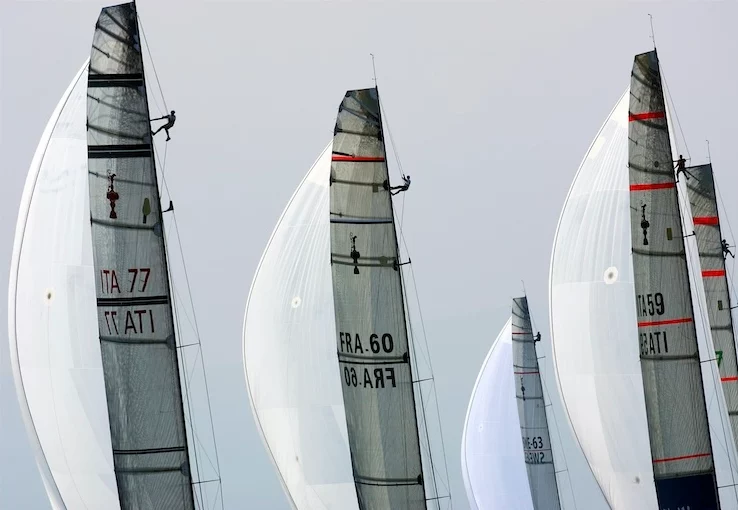
What continues to inspire you? What are the next projects that excite you?
I would like to continue what I have been doing for 40 years, but I feel the constraints associated with age. Boats are becoming faster and harder to follow, even with a motorboat. It has become like car racing: we wait for them at a fixed point, and then the crew passes by at high speed. They are helmeted, hidden in their cabins and perform fewer and fewer maneuvers, which limits the opportunities to take a good photo.
I still have the desire to follow events such as the America’s Cup, and to explore new perspectives with drones. They offer exciting possibilities especially because there is no longer a need to synchronize with a third-party pilot, as with helicopters.
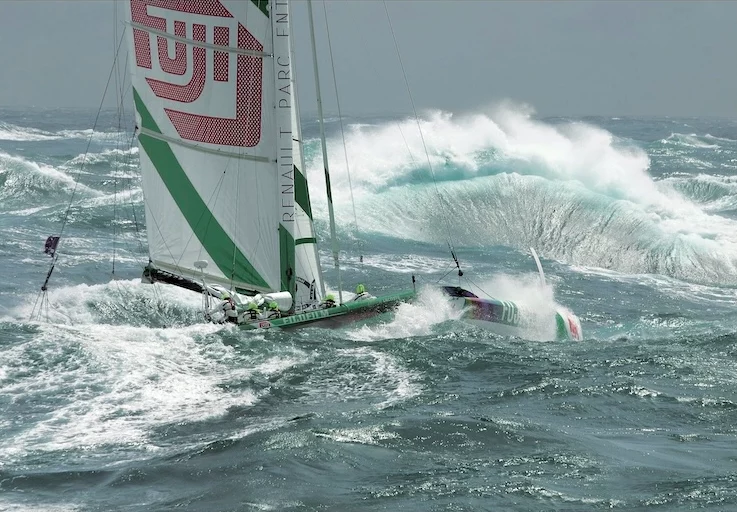
I would also like to cover the Olympic Games in Marseille, where the intensity of the competitions always generates captivating moments, especially during the medal ceremonies.
There is also the Vendée Globe, but the skippers take considerable risks for this race. I have known two or three skippers who have had serious accidents. This creates a funeral atmosphere at the start of the boats. But the arrivals are always incredible and remain among my favorite moments. I am always ready to experience these unique moments.
